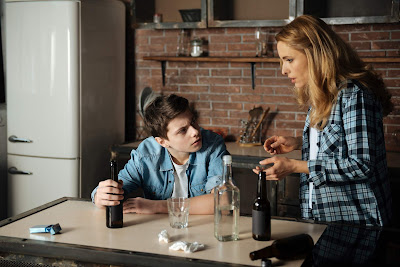Communicating messages to young people through real-life stories
 Anybody who has ever heard me present knows
that a big part of my talks are 'stories' – things that have happened to young
people and their parents that I have met over the years. Their names are
changed and any information that may identify a particular person or event is
altered, but it is usually these anecdotes that have the greatest impact on
those attending my presentations.
Anybody who has ever heard me present knows
that a big part of my talks are 'stories' – things that have happened to young
people and their parents that I have met over the years. Their names are
changed and any information that may identify a particular person or event is
altered, but it is usually these anecdotes that have the greatest impact on
those attending my presentations. With as many talks as I give I sometimes worry that there will be someone in the audience who may know the person I am talking about – no matter how well disguised there are some stories that may be identified by some. I faced this same dilemma when I wrote Teenagers, Alcohol and Drugs a few years ago. Should I get the person's permission if I use a story they told me? How would someone feel if they pick up the book and find their story on the pages?
As I said in the introduction to the book, my concern was addressed when I was giving a presentation to a group of educators in Perth.
Since 2006 at the end of each of my talks to school communities, I have told the story of a Perth teenage girl who died under tragic circumstances. I use the story to illustrate how important it is that young people have basic life skills so that they will know what to do in an emergency.
The story is very moving and never fails to result in the audience being shocked at the tragic loss. However, during this talk one woman’s reactions were extreme to say the least. As I was sharing the story she began to become very upset. She was crying and the man who was sitting next to her needed to console her. There was nothing I could do at the time and continued with the story.
Once the presentation had finished the woman made her way to the front of the stage and I moved towards her to apologise if I had upset her in any way. Fighting back the tears she told me that the girl in the story had been her niece. I had no idea what to say. Had I got the story wrong? Had I misrepresented the young girl or brought back bad memories to the aunt?
She was quick to set my mind at rest and thanked me for talking about her niece. She told me that she had been a lovely girl and that the family was still recovering from the loss of teenager.
"If telling her story protects one other young person from dying in a similar way, then tell the story as often as you can," she said.
Since that time I have been contacted by another member of the girl's family who also wanted to thank me for using the story in a positive way. They have attempted to keep the story alive but had found it difficult. In my privileged position I am able to do so.
Real-life stories are a great way of getting messages across to any audience. That is why news and current affairs programs are always looking for a personal tale to attach to new research findings or the latest statistics. Numbers are powerful but someone talking about their own story tugs at the heart-strings and is sure to get an emotional response.
We can talk to young people all we want about the risks attached to particular adolescent behavior but we know that they 'weigh risk reward differently' - most of them certainly understand the dangers but they just give more weight to the payoff they receive, leading them to do risky things. Young people remember stories and if we can tie them emotionally to a story, it may increase the chances of them remembering the messages being communicated.
At a time when our younger generation are getting a 'bad rap' from the media it is important that we maintain some perspective. We actually have a group of young people who are genuinely interested in collecting information on keeping themselves and their friends as safe as possible. Unfortunately we are so obsessed about providing them with information about negative side effects of drugs (the information we think they should have in an attempt to get them to not use) that we ignore how they process information and make decisions.
There are certainly no guarantees that using real-life stories to communicate messages will prevent them making unhealthy choices (and I'm certainly not advocating ex-drug users presenting to students about their struggles as the evidence does not support this practice) but finding real-life stories that support the messages we want to get across to young people is certainly an approach that I find to be successful ...



One of the things I love about your book were the real-life stories. So many times when reading instructional books like these you can tell stories are made-up just to help the writer illustrate their point. I feel with your work it is the reality of what teenagers face that drives what you do. And because the stories are real and from the frontline, as a reader and parent I can trust your information.
ReplyDelete